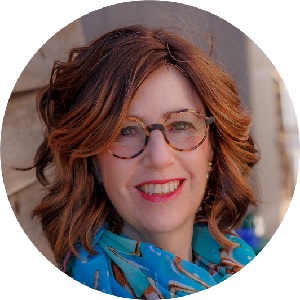Good Vision

Is the world a good or a bad place? Are the people in it praiseworthy or obnoxious?
Of course, nothing and no one is black or white. Nonetheless, on a given day the world can look bleak, filled with danger or gloom, while on another day, the same world feels rosy, filled with joy and blessing. Nothing’s really changed; we’re just gazing at different elements of it.
The same is true of our loved ones. Like the world, they are multifaceted and our eyes land on different aspects of their being, highlighting the positive or negative sides of their character.
Even our own minds hold this multiplicity. Sections of our brain are devoted to tranquility, harmony and joy, while others specialize in worry, terror and stress. Who are we really, and what is the nature of the world we live in and the people who populate it? It depends largely on where we rest our gaze.
Looking Within
Wife, describing herself: “I feel I’m a very loving person. I always look for the good in people. I have a lot of patience. I’d say I’m very positive.”
Husband, commenting on her description: “Maybe she’s like that with the kids and her family, but with me she’s angry a lot of the time, impatient, and critical. I’d say she’s very negative.”
The truth is that this woman has both sides to her personality. However, she tends to see only the positive and this makes her feel satisfied with herself. Her “good eye” toward her own character gives her high self-esteem. Her blindness to her faults helps her move about happily in her world, albeit in a form of denial that will stunt her growth.
The people who focus on their weak points, on the other hand, can be crippled by their blindness to their goodness. Feelings of inadequacy, unworthiness, and self-hatred can remove their joy of living and sabotage their success in every area of life. They, too, are stymied in their growth as their low self-esteem and harsh self-judgment impedes their ability to make healthy progress.
An honest and compassionate assessment of one’s good and not-so-good points is the best route for self-actualization and emotional balance. Yet leaning to one side or the other is common, and as we’ve seen, the direction of that lean has powerful ramifications.
Looking Out
This concept is equally true when it comes to viewing the world around us, including the people in it.
“My ex-husband is a terrible person. I can’t believe I married him.”
Once a person becomes an official enemy, we tend to close our vision to their good parts and concentrate almost entirely on the negative. It will seem that we’re just looking at reality, but that’s exactly the point: Reality changes depending on what we’re looking at. An ex-spouse often finds a new spouse who, in looking for good, now sees the positive within that very same “terrible person.”
“My eight-year-old had a rough year last year. He got into trouble all the time, both at home and at school. The teachers sent home notes every day about how he was disrupting the class, being rude, or being defiant. I’d see these notes and reprimand him, never really noticing that it wasn’t working very well. In fact, the more I reprimanded him, the worse his behavior became.”
Yes, focus on negativity brings more negativity. Conversely, teachers and parents who look for the good in a child will always find it — and through acknowledging it, they’ll find more good. The principle that Hashem leads a person in the way he or she wants to go is clearly seen in this idea; a person finds whatever he or she is looking for. How we look at people, the world around us or ourselves, determines what we’ll see.
While what we look for affects our own feelings of joy or stress, what we talk about affects those who live with us, especially our children. When we say good things about people, places, and things, our children learn to look for the good. When we complain about what’s wrong, we train our children to focus on the negative side of life. Fortunately, we can develop our good eye and help our kids do the same by consciously choosing to look for the good — knowing that this will improve our vision.
(Originally featured in Family First, Issue 626)
Oops! We could not locate your form.

